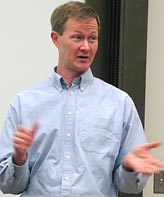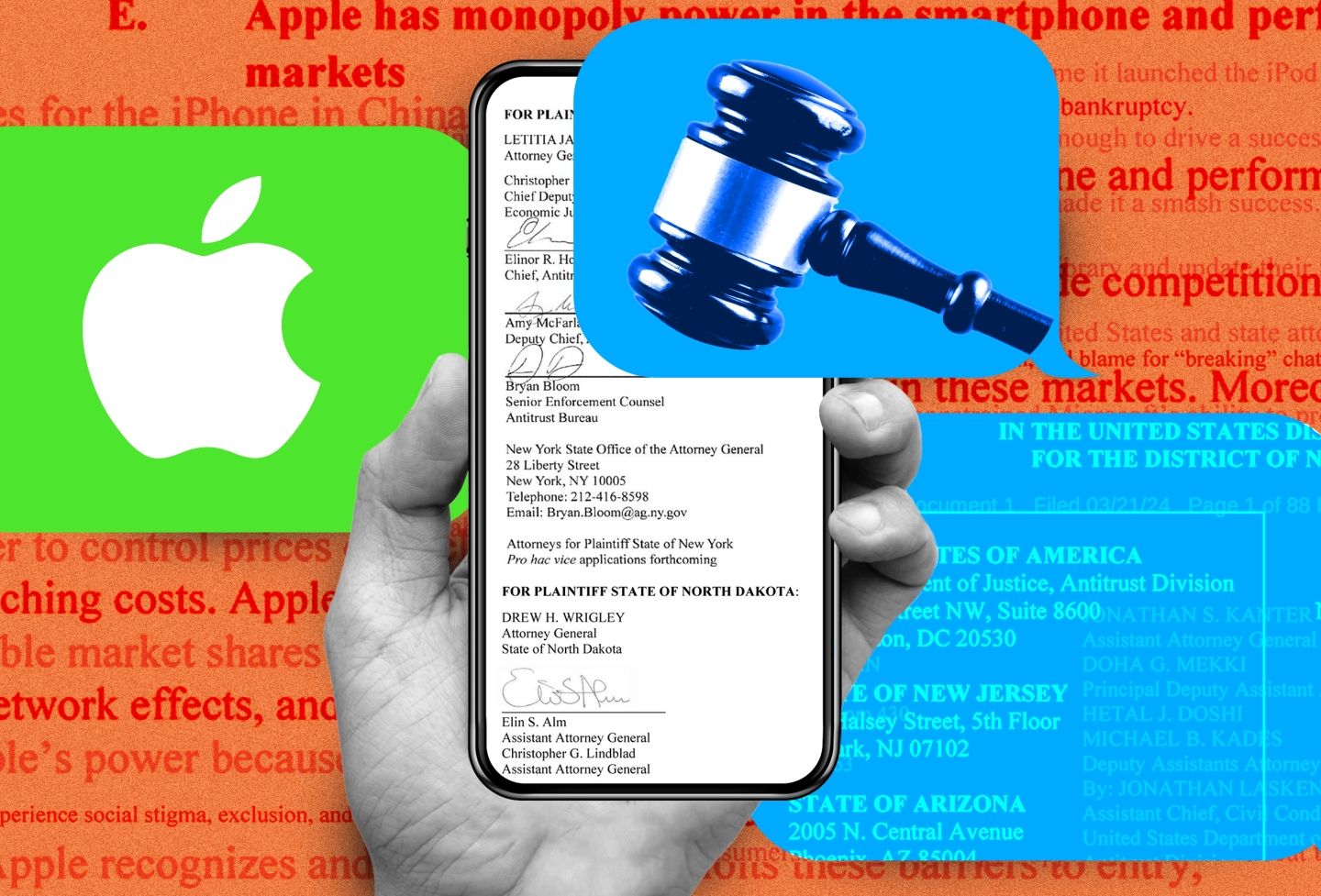Blackberry Lawsuit Leads to Big Bucks for Small-Time Company

How does a $23.1 million verdict turn into a $612.5 million deal for a small-time inventor?
Kevin Anderson, an attorney from Wiley, Rein, & Fielding (WRF), explained their strategy in prosecuting Research in Motion (RIM), makers of the Blackberry wireless platform, for patent infringement against their client, NTP.
“RIM’s defenses throughout the litigation … were hard to believe,” Anderson said at a talk sponsored by the Virginia Society of Law and Technology April 10. RIM used every defense in the book, he said, leaving RIM with many small arguments and not an overall concrete argument that could win the case.
RIM claimed that Blackberries don’t do e-mail, which they eventually had to admit was wrong when WRF brought in a full, two-page ad of the Blackberry product from the Wall Street Journal that advertised the feature.
RIM attacked nuances in the claim language of NTP’s patents, which was ultimately resolved in the federal circuit court in favor of NTP.
In another argument, RIM claimed that it was immune to U.S. patent law because it was a Canadian company and the wireless operation center, which all Blackberry e-mails go through, is located in Canada. RIM tried to take this issue to the Supreme Court and lost on the grounds that most Blackberry use occurs in the United States. “You’re not being transported up to Canada for the interim of your message and transported back,” Anderson said.
The turning point of the case, Anderson said, was RIM’s attempt to demonstrate that its technology used prior art (information in the public domain). RIM set up an old laptop, a wireless transmitter, a pager, and a printer. They sent a message from the laptop to the pager that printed the e-mail on the printer, mesmerizing the jury, Anderson said. His team was feeling down about the way the demonstration struck the jury, until Anderson noticed that two of the files RIM used in the demonstration were from 1994. The finding was significant because it proved that RIM did not have a claim to prior art since the critical date had to be before 1990. The judge threw out the demonstration and told the jury to disregard what they had just seen.
The jury now believed that RIM was trying to deceive them, Anderson said, and came back on the side of NTP with a $23.1 million verdict in past damages and a 5.5 percent royalty rate.
“This is where it gets interesting,” Anderson said. RIM had an infringement against its sole product. Most companies would have settled at that point, he noted. Prior to the verdict, NTP tried to settle three separate times, including the day after RIM’s demonstration failed. RIM never responded to offered deals, although at the time NTP was willing to settle and sell the patents to the company for $50 million.
In post-trial arguments, WRF asked for an injunction of the Blackberry in the United States.
“I think we recognized fairly early on that it’s unlikely that a judge is going to issue an injunction shutting down a company’s primary product when they haven’t even had a chance to appeal,” Anderson said. “So we devised an alternative that we had seen in one other kind of obscure case, which was, that for an exchange of the injunction, pending appeal, they would escrow royalties during the appeal.”
During the appeal process, RIM’s growth exploded. The number of Blackberry users grew from 300,000 to 4 million and the escrow account was quickly swamped. A huge sum of money was collecting in a Richmond, Va., bank and the patent doesn’t expire until 2012, Anderson said.
The court issued the injunction and RIM appealed up to the federal circuit courts. RIM tried to get a stay of a mandate to protect their business in the United States but the federal circuit ruled in favor of NTP. Approximately 10 percent of RIM’s business is safe because it serves the government, which is protected by law from being enjoined.
The judge warned the two companies settle or he would uphold the original jury verdict that would ultimately shut down RIM’s service. Analysts looked at RIM’s present-value calculation and speculated that a settlement could reach the $1.5 billion dollar range. One firm said that $3 billion would be the worst-case scenario, “which makes your client very happy,” Anderson said.
In the end, an agreement was reached for $612.5 million and other terms that Anderson could not discuss for confidentiality reasons.
Founded in 1819, the University of Virginia School of Law is the second-oldest continuously operating law school in the nation. Consistently ranked among the top law schools, Virginia is a world-renowned training ground for distinguished lawyers and public servants, instilling in them a commitment to leadership, integrity and community service.


